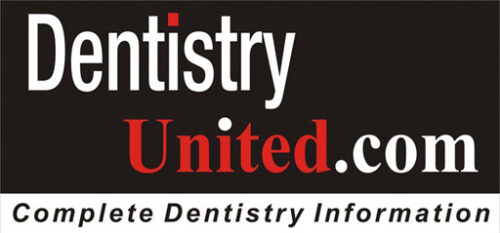Post-SRP dentinal hypersensitivity can impact patient comfort and compliance. Learn evidence-based prevention and treatment strategies to optimize care.
Introduction
Scaling and Root Planing (SRP) remains a cornerstone of periodontal therapy. However, post-procedural dentinal hypersensitivity is a common challenge that may compromise patient compliance and satisfaction. Understanding the etiopathogenesis and integrating evidence-based prophylactic and therapeutic strategies is essential for managing this clinical issue effectively. This article presents a research-driven framework for addressing post-SRP hypersensitivity, tailored for periodontal specialists.

Pathophysiology of Post-SRP Hypersensitivity
Post-scaling hypersensitivity arises due to multiple factors, including:
- Dentin Exposure: Removal of supra- and subgingival deposits exposes dentinal tubules, leading to hydrodynamic fluid shifts (Brännström’s hydrodynamic theory).
- Gingival Recession: Pre-existing recession may worsen with instrumentation, increasing sensitivity.
- Inflammatory Sequelae: Transient pulpitis and localized inflammation from mechanical debridement can heighten nociceptive signaling.
- Pre-Existing Hypersensitivity: Patients with enamel erosion, thin gingival biotypes, or previous periodontal disease are at greater risk.
Pre-Operative Strategies: A Prophylactic Framework
Comprehensive Patient Assessment
- Conduct periodontal evaluation using tactile (explorer) and thermal (air stimulus) diagnostics.
- Identify high-risk patients, including those with recession, enamel defects, or prior hypersensitivity.
Patient Communication & Informed Consent
- Discuss potential post-SRP sensitivity to set realistic expectations and improve adherence.
- Provide structured post-operative guidelines for sensitivity management.
Pre-Treatment Desensitization Protocols
- Recommend desensitizing toothpaste with potassium nitrate or stabilized stannous fluoride for 2–4 weeks pre-SRP.
- Consider fluoride varnish or oxalate-based desensitizers as a preemptive measure.
Intra-Operative Modifications to Reduce Hypersensitivity
Instrumentation Optimization
- Use controlled, precise strokes to minimize trauma and excessive dentin exposure.
- Avoid overzealous root planing, especially in recession-prone sites.
Ultrasonic Scaling Adjustments
- Optimize water irrigation to prevent thermal hypersensitivity.
- Prefer piezoelectric scalers over magnetostrictive ones for reduced vibrations and better patient comfort.
Immediate Desensitization Measures
- Apply oxalate-based desensitizers post-SRP for calcium oxalate tubule occlusion.
- Use nano-hydroxyapatite remineralization agents to enhance dentinal integrity.
Post-Operative Interventions: An Evidence-Based Approach
Desensitizing Therapeutics
- Administer high-potency fluoride varnish (5% sodium fluoride) or glutaraldehyde-based sealants.
- Recommend potassium nitrate, stannous fluoride, or arginine-calcium carbonate toothpaste for at-home use.
Anti-Inflammatory Modulation
- Prescribe NSAIDs (e.g., ibuprofen) to manage post-procedural discomfort.
Dietary & Behavioral Recommendations
- Advise avoiding acidic foods and extreme temperature changes for 48–72 hours post-SRP.
- Encourage the use of ultra-soft toothbrushes and non-abrasive toothpaste.
Structured Follow-Up
- Schedule post-SRP assessments to monitor hypersensitivity and provide additional interventions if needed.
Advanced Therapies for Persistent Hypersensitivity
For cases unresponsive to conventional desensitization:
In-Office Advanced Therapies
- Laser Desensitization: Diode or Nd:YAG lasers can seal dentinal tubules and reduce sensitivity.
- Bioactive Restoratives: Use calcium silicate cements or hydroxyapatite nanoparticles for remineralization.
Restorative Interventions
- Apply dentin bonding agents or glass ionomer sealants for long-term tubule occlusion.
- Consider minimally invasive composite restorations for localized sensitivity.
Specialist Referral
- Refer to an endodontist for suspected pulpal pathology.
- Consult a periodontist for advanced mucogingival procedures if needed.
Future Innovations in Hypersensitivity Management
Recent advancements offer promising new solutions:
- Nanotechnology: Hydroxyapatite nanoparticles and bioactive glass for long-term remineralization.
- Biomimetic Regeneration: Peptide-based remineralization agents (e.g., P11-4) show potential.
- Enhanced Oxalate-Based Formulations: Next-generation potassium oxalate solutions with improved tubule occlusion longevity.
Conclusion
By adopting a meticulous, research-driven approach to post-SRP hypersensitivity, periodontal specialists can enhance patient comfort, improve compliance, and optimize long-term periodontal maintenance.
Dr. Syed Nabeel, BDS, D.Orth, MFD RCS (Ireland), MFDS RCPS (Glasgow), is a dedicated dental professional with a special interest in Neuromuscular Dentistry (NMD). With over two decades of experience, he has been committed to diagnosing and managing occlusal and temporomandibular joint (TMJ) disorders using a patient-centered approach that integrates the principles of neuromuscular occlusion.
Alongside his clinical work, Dr. Nabeel is deeply interested in digital dentistry and the role of artificial intelligence (AI) in dental practice. He believes that technology has the potential to enhance patient care by improving diagnostics and treatment precision. His work in this field reflects his curiosity and dedication to advancing dentistry in meaningful ways.
Dr. Nabeel also enjoys sharing knowledge and has been lecturing extensively on neuromuscular dentistry. His approach to teaching emphasizes practical insights, evidence-based methods, and a focus on patient well-being, making his sessions both engaging and valuable for fellow professionals. Additionally, he is a sought-after speaker and blogger on practice management, where he provides insights on optimizing workflow efficiency, patient engagement, and the integration of modern technology in dental practices.
Based in Mysore, India, Dr. Nabeel is the founder of Smile Maker, a practice where he strives to combine advanced diagnostic tools with personalized treatment plans to help patients with occlusal and TMJ-related concerns. With a strong commitment to continuous learning and improvement, Dr. Nabeel remains deeply invested in the evolving landscape of dentistry, always seeking ways to enhance patient outcomes with care and compassion.

